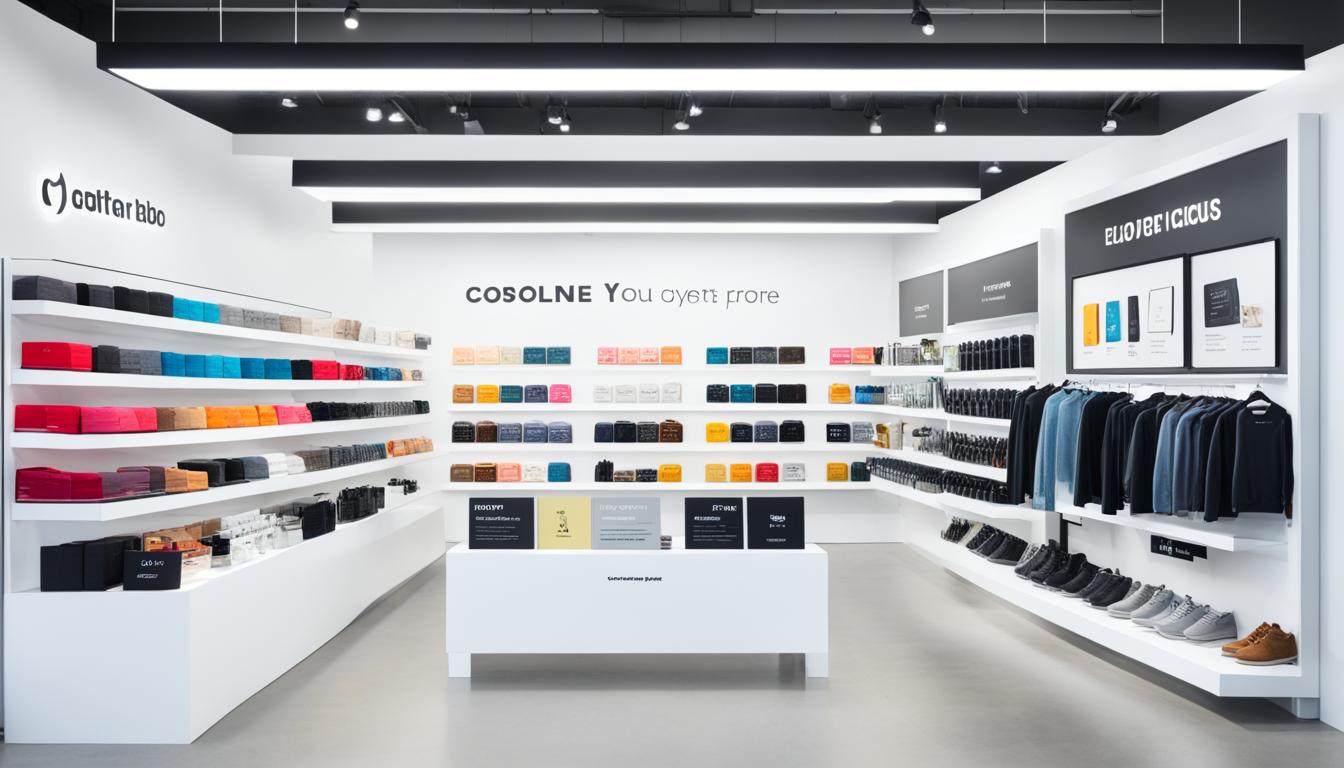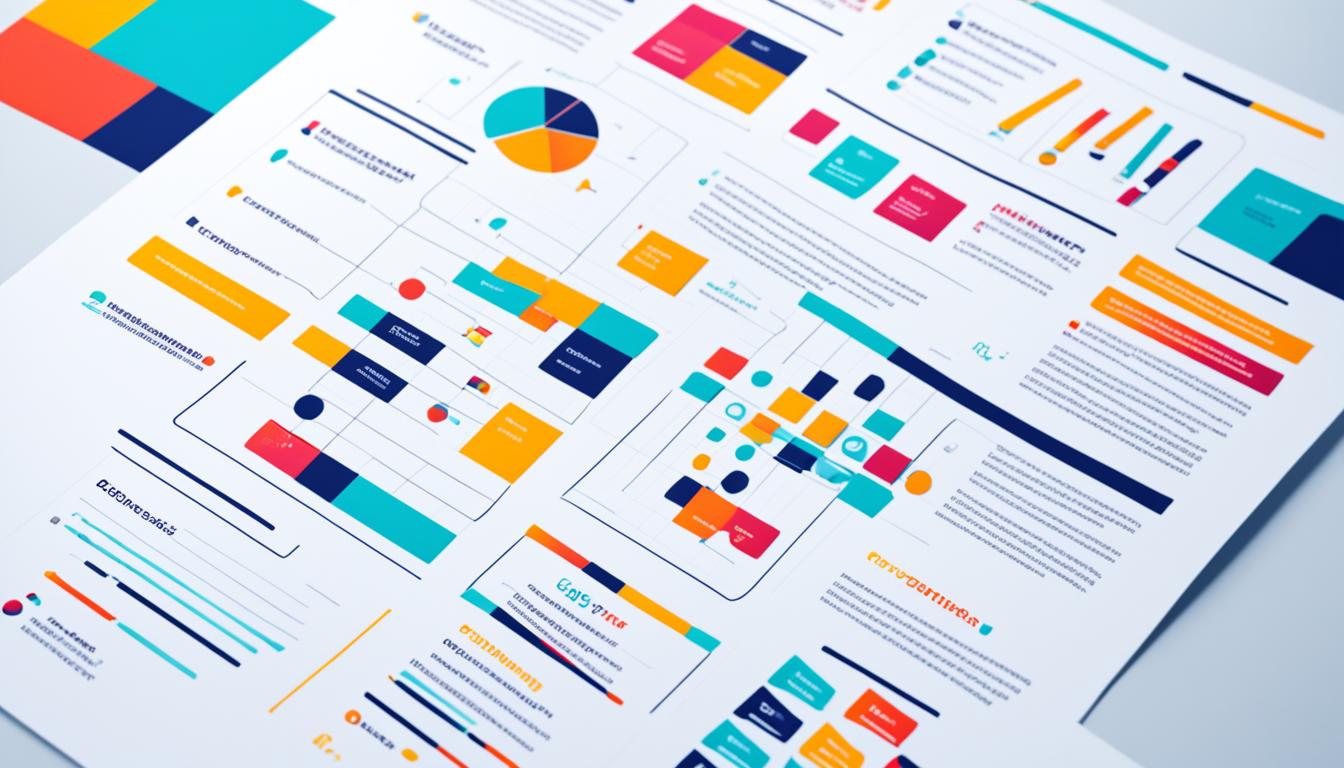The beauty industry is constantly evolving, and marketing strategies need to adapt to meet changing consumer needs. In 2024, beauty brands must stay ahead of the game by embracing new trends and implementing innovative strategies to succeed in a highly competitive market.
Key Takeaways:
- Embrace inclusivity and diversity in beauty marketing campaigns to resonate with a wider audience and contribute to a more inclusive beauty culture.
- Leverage interactive content and augmented reality to provide immersive experiences for customers, enhancing their online shopping journey and reducing purchase hesitation.
- Integrate social commerce features into your marketing strategies, allowing customers to discover and purchase products directly through social media platforms.
- Prioritize sustainability and eco-friendly initiatives, highlighting your brand’s commitment to ethical practices and appealing to environmentally conscious consumers.
- Implement personalized marketing techniques and AI-driven recommendations to provide tailored experiences and build stronger connections with your target audience.
Embracing Inclusivity and Diversity
In today’s beauty industry, inclusivity and diversity are no longer optional; they are essential pillars of successful marketing strategies. Beauty brands must prioritize celebrating and embracing diverse skin tones, hair textures, and body types to resonate with a broader audience and contribute to a more inclusive beauty culture.
Authenticity is key when it comes to inclusivity. Brands that genuinely recognize and address the unique needs of diverse consumers can foster a sense of belonging and empower individuals to embrace their own beauty. By showcasing a range of skin tones, hair textures, and body types in their advertising and promotional materials, beauty brands can reflect the true diversity of their customers and create a stronger connection.
Furthermore, inclusive beauty campaigns go beyond just representation. They challenge societal norms and redefine beauty standards, promoting self-acceptance and encouraging individuals to embrace their uniqueness. By doing so, beauty brands play a vital role in driving positive change and promoting inclusivity as a fundamental value in the industry.
For example, let’s take a look at the “Real Beauty” campaign by Dove. This campaign not only featured women of different body types, ethnicities, and ages but also aimed to challenge narrow beauty standards and inspire women to feel confident in their own skin. By celebrating diverse beauty, Dove received widespread praise and recognition for its commitment to inclusivity.
As the table below demonstrates, embracing inclusivity and diversity in beauty marketing can lead to significant benefits for brands:
| Benefits of Embracing Inclusivity and Diversity |
|---|
| 1. Expanded customer base through wider audience appeal |
| 2. Enhanced brand reputation and loyalty |
| 3. Increased sales and revenue |
| 4. Greater customer trust and authenticity |
| 5. Positive social impact and contribution to a more inclusive beauty culture |
By prioritizing inclusivity and diversity in their marketing strategies, beauty brands not only tap into a diverse customer base but also make a positive impact on society. Celebrating diverse skin tones, hair textures, and body types through inclusive beauty campaigns not only drives brand success but also helps shape a more inclusive and accepting beauty industry.
Interactive Content and Augmented Reality (AR)
In the fast-paced world of beauty marketing, utilizing interactive content and augmented reality (AR) experiences has become essential for beauty brands to stay ahead of the curve. Today’s consumers are seeking immersive and engaging ways to interact with products before making a purchase. By incorporating interactive elements such as virtual try-on experiences, beauty brands can provide customers with a realistic visualization of how products will look on their skin or hair.
Virtual try-on experiences leverage AR technology to create a seamless integration between the digital and physical worlds. With just a few clicks, customers can use their smartphones or computers to virtually explore a wide range of beauty products, from makeup shades to hair colors. This interactive feature not only enhances the online shopping experience but also reduces the hesitation associated with buying beauty products online, as customers can confidently make informed purchasing decisions.
Enhancing the Online Shopping Experience
Augmented reality in the beauty industry has transformed the way customers shop for products. With virtual try-on experiences, customers no longer have to rely solely on product descriptions or swatches. They can witness the transformative power of beauty products firsthand, allowing them to experiment with different looks and explore various options.
Additionally, interactive content and AR experiences provide customers with a sense of empowerment and confidence in their beauty choices. By allowing them to see how products will enhance their natural features, brands build trust and establish a deeper connection with their audience.
Moreover, the ability to virtually try on products saves customers time and effort by eliminating the need to physically visit stores or return products that don’t meet their expectations. With just a few taps, customers can explore different shades, textures, and finishes, ultimately streamlining their decision-making process and enhancing the overall online shopping experience.
As technology continues to advance, beauty brands that embrace interactive content and augmented reality experiences will undoubtedly have a competitive edge in the market. By providing customers with immersive and engaging ways to interact with products, brands can create a more personalized and enjoyable shopping journey, ultimately driving customer satisfaction and loyalty.
Social Commerce Integration
The beauty industry has witnessed the powerful intersection of social media and e-commerce in recent years. In 2024, successful beauty brands are embracing social commerce as an integral part of their marketing strategy. By seamlessly integrating social commerce features, these brands are enabling customers to discover and purchase products directly through popular social media platforms, revolutionizing the beauty shopping experience.
One platform that has emerged as a game-changer in social commerce is Instagram. With its vast user base and highly visual nature, Instagram has introduced Instagram Shops for the beauty industry. Brands can leverage this feature to showcase their products on a dedicated shop page, making it convenient for users to browse, explore, and make purchases without leaving the app.
TikTok, another popular social media platform, has also recognized the potential of social commerce in the beauty industry. With the introduction of TikTok Shop, beauty brands can leverage the platform’s engaging video format to promote their products and drive sales. By integrating the ability to purchase products directly from TikTok, brands can capitalize on the platform’s viral nature and influence to attract and convert customers.
Facebook, a pioneer in social media, offers Facebook Marketplace as an essential tool for beauty brands. With a vast user base and powerful targeting options, beauty brands can tap into the platform’s robust e-commerce capabilities. By listing their products on Facebook Marketplace, brands can reach a wide audience and provide a seamless shopping experience within the Facebook ecosystem.
In summary, social commerce integration has become a key driver of success for beauty brands in 2024. Instagram Shops, TikTok Shop, and Facebook Marketplace are just a few examples of the social commerce tools that brands should leverage to enhance their visibility, engagement, and conversions in the beauty industry.
Sustainability and Eco-Friendly Initiatives
Sustainability is a critical factor that has a strong influence on consumer choices in the beauty industry. As consumers become more aware of environmental issues and the impact of their purchasing decisions, beauty brands need to prioritize eco-friendly practices and demonstrate their commitment to sustainability.
One important aspect of eco-friendly beauty branding is the use of sustainable packaging. Brands can opt for recyclable or biodegradable materials to minimize their carbon footprint. By choosing sustainable packaging options, companies can contribute to reducing plastic waste and promote a greener future for the industry.
Cruelty-free beauty products are another key component of sustainable beauty brands. By ensuring that no animal testing is involved in the development and manufacturing of their products, brands can appeal to consumers who are passionate about animal welfare. Marketing strategies should highlight the cruelty-free aspect of these products to educate and attract environmentally-conscious consumers.
Ethically sourced ingredients are essential for sustainable beauty brands. By partnering with suppliers who follow ethical practices, brands can ensure that their products are produced without causing harm to the environment or exploiting workers. Marketing campaigns can emphasize the brand’s commitment to using ethically sourced ingredients, resonating with consumers who prioritize ethical and sustainable choices.
The Importance of Sustainability in the Beauty Industry
Sustainable beauty practices go beyond just product offerings. Beauty brands should strive to adopt comprehensive sustainability initiatives throughout their operations, including energy-efficient manufacturing processes, waste reduction, and supporting environmentally-friendly causes.
Consumers are increasingly seeking out eco-friendly beauty brands that align with their values and choices. By integrating sustainability into their marketing strategies, beauty brands can stand out from their competitors and attract a growing segment of environmentally-conscious consumers.
Personalized Marketing and AI-driven Recommendations
Personalization is a crucial element in successful beauty marketing. By understanding individual preferences and needs, beauty brands can deliver tailored experiences to their customers. With advancements in AI technology and data analysis, brands can now harness the power of customer data to provide personalized product recommendations and targeted marketing messages.
AI-driven algorithms analyze customer data, such as purchase history, browsing behavior, and demographics, to generate accurate insights. This enables beauty brands to make data-driven decisions and create personalized marketing campaigns that resonate with their audience.
One of the key applications of AI-driven recommendations is in skincare. By analyzing a customer’s skin type, concerns, and goals, brands can offer personalized skincare routines tailored to specific needs. This not only enhances the customer experience but also increases the likelihood of repeat purchases and brand loyalty.
Targeted product suggestions are another powerful aspect of personalized marketing. By understanding individual preferences and previous purchases, brands can recommend complementary products or new releases that align with a customer’s interests. This not only drives sales but also enhances the overall customer journey.
Benefits of Personalized Marketing and AI-driven Recommendations
The integration of personalized marketing and AI-driven recommendations offers several benefits for beauty brands:
- Enhanced Customer Experience: Personalized marketing creates a more tailored and relevant experience for customers, leading to increased satisfaction and brand affinity.
- Increased Sales: By recommending products that align with a customer’s preferences, beauty brands can drive sales and improve conversion rates.
- Improved Customer Retention: Personalization helps foster stronger connections with customers, increasing the likelihood of repeat purchases and brand loyalty.
- Data-driven Insights: AI-driven algorithms provide valuable insights into customer behavior and preferences, enabling brands to make data-driven marketing decisions.
The beauty industry is highly competitive, and personalized marketing is a powerful tool for brands looking to differentiate themselves. By leveraging AI technology and customer data analysis, beauty brands can deliver targeted and relevant marketing messages that resonate with their audience, ultimately driving sales and fostering long-term customer relationships.
Influencer Partnerships with Micro and Nano Influencers
Influencer marketing has proven to be a powerful strategy in the beauty industry, allowing brands to connect with their target audience through trusted voices. However, as the industry evolves, the focus is shifting towards micro and nano influencers.
Micro and nano influencers may have smaller followings compared to macro influencers, but they offer unique advantages. These influencers have highly engaged and niche audiences, who are more likely to view them as relatable and trustworthy. Their content often feels authentic and genuine, resulting in stronger connections with consumers.
By collaborating with micro and nano influencers, beauty brands can tap into the power of authenticity and relatability. These influencers are more accessible, making it easier for brands to form partnerships and create impactful campaigns. They offer a cost-effective alternative, as their fees are often lower compared to macro influencers. This allows beauty brands with smaller budgets to leverage the benefits of influencer marketing.
To ensure successful partnerships, it is essential for beauty brands to carefully select influencers who align with their values and aesthetics. The influencer’s content should resonate with the brand’s target audience and reflect the brand’s messaging. Authenticity is key in influencer marketing, and partnering with influencers who genuinely believe in the brand will result in more organic and effective campaigns.
Table: Comparison of Influencer Types
| Influencer Type | Follower Count | Engagement Rate | Cost |
|---|---|---|---|
| Macro Influencers | 100,000+ | Medium | High |
| Micro Influencers | 10,000 – 100,000 | High | Medium |
| Nano Influencers | 1,000 – 10,000 | Very High | Low |
The above table showcases a comparison of different types of influencers based on follower count, engagement rate, and cost. As shown, micro and nano influencers often have higher engagement rates and lower costs compared to macro influencers. This highlights the potential of working with micro and nano influencers to create authentic connections with consumers while optimizing marketing budgets.
By engaging with micro and nano influencers, beauty brands can foster genuine connections with their target audience. These partnerships allow for the creation of relatable and authentic content, enhancing brand credibility and increasing consumer trust.
With the rise of social media, influencers continue to play a pivotal role in shaping beauty trends and consumer preferences. By embracing influencer marketing with micro and nano influencers, beauty brands can establish meaningful connections with consumers, resulting in increased brand awareness, trust, and ultimately, sales.
User-Generated Content (UGC) Campaigns
User-generated content (UGC) has become an invaluable tool for beauty brands in their marketing strategies. By encouraging customers to share their experiences with products through reviews, photos, and videos, brands can create a sense of community and authenticity. UGC campaigns not only provide social proof but also allow brands to connect with their audience on a more personal level.
Customer reviews and testimonials play a crucial role in building trust and credibility. When potential customers see positive reviews and testimonials from real people, it strengthens their confidence in the brand and its products. Incorporating these reviews and testimonials in marketing materials and product pages can significantly influence purchasing decisions.
Building an engaged community is another advantage of UGC campaigns. By encouraging customers to share their experiences, brands foster a sense of belonging and create a space where beauty enthusiasts can connect and interact. Brands can leverage this community to gather feedback, spark conversations, and even launch co-creation initiatives through product contests or collaborations.
One popular beauty brand that effectively utilizes UGC campaigns is Glossier. Their online platform features customer reviews and photos, allowing shoppers to see how products look on different skin tones and textures. Glossier’s strategy taps into the desire for relatable and authentic content, making customers feel like they are part of a trusted community.
Advantages of User-Generated Content (UGC) Campaigns:
- Provides social proof and builds trust
- Creates a sense of community and belonging
- Enables customers to share their experiences and opinions
- Encourages engagement and interaction among customers
- Offers diverse perspectives and showcases real-world product results
Beauty brands can initiate UGC campaigns through different strategies, such as running contests, featuring customer testimonials on their website, or implementing branded hashtags for customers to share their experiences on social media. By combining UGC with other marketing efforts, such as influencer partnerships or personalized recommendations, beauty brands can amplify their message and create a more authentic connection with their audience.
| Brand | UGC Campaign |
|---|---|
| Glossier | Showcasing real-life product photos and reviews on their website |
| Sephora | Encouraging customers to share their makeup looks using branded hashtags |
| Tarte Cosmetics | Running UGC contests, featuring customer-created content on social media |
By leveraging user-generated content, beauty brands can harness the power of word-of-mouth marketing and tap into the influence of their satisfied customers. UGC not only builds authenticity and trust but also provides a platform for customers to express themselves and create a vibrant beauty community.
Conclusion
In conclusion, the beauty industry is constantly evolving, and successful marketing strategies in 2024 require brands to stay ahead of trends and embrace innovation. By implementing inclusive and diverse campaigns, leveraging interactive content and AR experiences, integrating social commerce, prioritizing sustainability and eco-friendly initiatives, utilizing personalized marketing and AI-driven recommendations, collaborating with micro and nano influencers, and encouraging user-generated content, beauty brands can stand out and achieve success in the competitive beauty industry.
To revolutionize their approach, beauty brands must adapt to changing consumer needs and deliver unique experiences. By embracing the power of digital innovation and staying up-to-date with the latest trends, brands can create meaningful connections with their audience and differentiate themselves in the market. Implementing educational content and tutorials can also help to establish authority and build trust among consumers seeking guidance and information.
In summary, the key to success in beauty brand marketing in 2024 lies in staying ahead of trends, embracing innovation, and continuously adapting to meet the evolving needs and preferences of consumers. With strategic planning and execution, beauty brands can position themselves as industry leaders, connect with their target audience on a deeper level, and thrive in the highly competitive beauty landscape.


